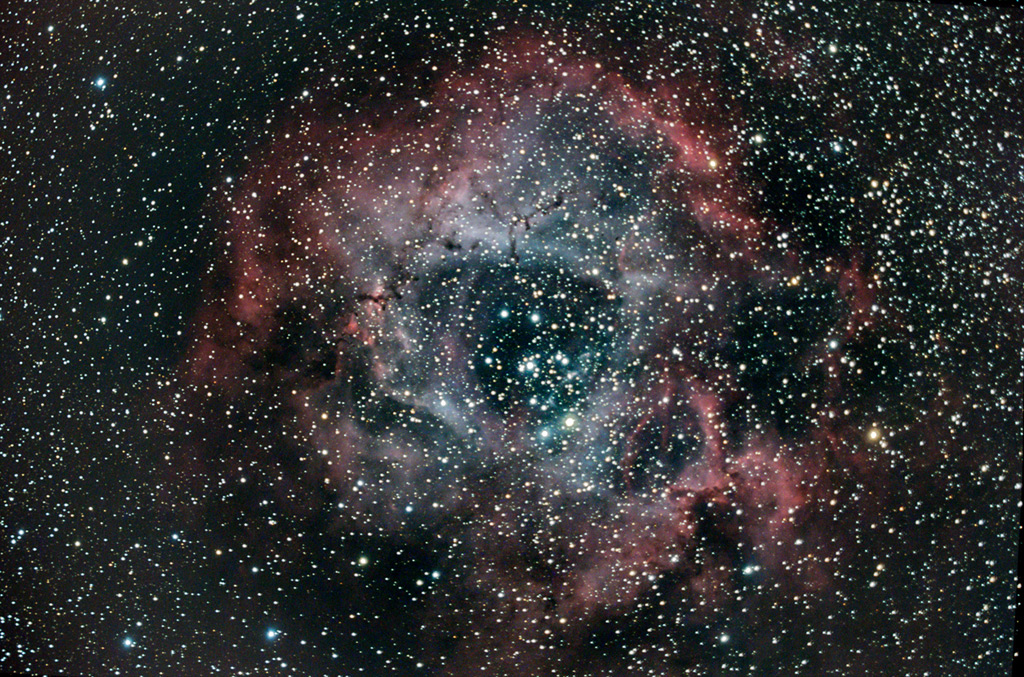
NGC2237 Rosette Nebula
Magnitude: 9.0
Distance Aprox: 5,200 light-years
Diameter: 130 light-years
Constellation: Monoceros (The Unicorn)
The complex has the following NGC designations:
NGC 2237 – Part of the nebulous region (Also used to denote whole nebula)
NGC 2238 – Part of the nebulous region
NGC 2239 – Part of the nebulous region (Discovered by John Herschel)
NGC 2244 – The open cluster within the nebula (Discovered by John Flamsteed in 1690)
NGC 2246 – Part of the nebulous region
The Rosette Nebula is an emission nebula, a large star forming region. The nebula is a large cloud of gas and dust that lies near a large molecular cloud and is closely associated with the open cluster NGC 2244, whose stars were formed from the nebula’s matter in the last five million years. The Rosette is lit by the young stars located within the nebulous region. The radiation from the stars causes the atoms in the nebula to emit radiation themselves, and as a result, the emission nebula is produced.
Taken 2/17/18 in Chiefland Florida by Russell Kille on a CPC 1100 with Hyperstar @ F2 and ZWO ASI294MC Pro camera
Click for full resolution.